John Philip Shenale and Tori Amos photograph by M. Woodhull PB: The Amos album, ‘Night of Hunters’ was commissioned by Deutsche-Gramaphon, one of the world’s longest-standing labels. The project brought Tori back to her classical roots, and it was, what I consider, a big ask, because her task was to create an original song cycle based on iconic classical works. JPS: The A & R rep. was unlike any other A & R guy that I’ve ever met. He was massively educated in music, and especially knowledgeable about classical music, and not finance. We had some great discussions, and having an A & R rep. sitting in the room during playback… Well, when is the last time you saw an A & R guy reading a score? Alexander Buhr was wonderful; a fabulous A & R person. PB: Walk us through a track, please, keeping in mind specific challenges. JPS: ‘Battle of Trees’ is an interesting example. Before I started arranging, I went to Cornwall and joined Tori and Mark Hawley, husband and studio-engineer, just before Tori was thinking about what songs to include in the album. I spent about a week. She played some things and we’d go back and forth for a couple of days. During this stay, I also prepared her piano to expand her sound palette. We’ve pushed the envelope of the piano since ‘Under The Pink.’ I set up various pianos but her “Bose’s” had to be treated with care because you can’t do the metal on string thing. They picked up a cheap grand on which I put chains, screws and vibrating washers. On her smaller Bose, I used rubber and felt, which was a much gentler treatment. The idea was that she would have these choices. The largest Bose was left untreated. Ultimately, she used the rubber-muted Bose on ‘Battle of Trees.’ It was magic. It fit perfectly with the idea of mists and light filtering through a canopy. When I wrote the parts for the Nonet, I was inspired by the folk-influenced 20th century composers Bartok and Kodaly. For the first song, ‘Star Whisperer,’ I got Tori’s piano and vocal and I’ll never forget it because when I listened to it, I thought, this is incredible. Then I got to the middle section and there was just her playing the piano. I said, ‘Tori, what’s going on in the middle?’ and in so many words, she said, ‘You.’ (laughs) I gleefully wrote the cello solo and then, the antiphonal back and forth, or call and response followed. It took about a week or so. What an introduction to what would be, ‘Night of Hunters.’ It was like ‘Everything, Everywhere, All at Once.’ Not only was working on ‘Night of Hunters’ intense, but there was a lot of dialogue between us, a conversation every evening at the end of my day which would be the beginning of her day. Around two or three in the morning, we would get into these long convos for about two hours. Some of the conversations were about lyrics, but when we work together, it’s not just about the music. There is a lot of philosophical discussion about creativity and the universe. It’s the environment. A lot of it may appear to be tangential, but it isn’t. It’s part of the whole process. PB: On the more recent ‘Ocean to Ocean,’ the credits list: ‘Philly’s Hyperion Orchestra.’ JPS: It was kind of a consciousness thing. It was really using plug-ins; boxes to really capture the spirit of the orchestra. I did five or six arrangements on that record. The idea was to capture really tightly orchestrated, articulated orchestral stuff. I was incredibly accurate with the orchestrations of it. The result, In certain respects, it was exactly what it needed without being a real orchestra. It gave you all the emotions you needed. You didn’t have to think about it. Sometimes with an orchestra, there’s some ponderousness about it. It’s too there. Being able to highly articulate strings, which is what you can do with plug-ins: there is such a selection. You can play a true legato with marcato accents with everything you could possibly want. I used that on a number of arrangements. As a result, we got something different. You didn’t just get string boxes playing, and you didn’t just get orchestra. You got something that had the best of both aspects. And the mic-ing of these samples is so diversified. You have MS mics on it. It takes up a great space on the track. That was the other thing, too, not just the articulation but the sound of the string. PB: The upbeat ‘Spies’ relied, in part, on a recurring third. JPS: ‘Spies’ was cinematic and highly sectional. The sections were re-orchestrated each time they occurred. A couple at the beginning were more ambient. It was like a film concept and very visual in my mind. PB: You used a special type of synthesizer from the 1970s for ‘Reindeer King’ from the 2017 album, ‘Native Invader.’ JPS: The Arp String Ensemble was the main synth in the late 1960s and early 1970s. The Freeman is from about the same date. It’s a completely different concept. The Arp Solina is used on a ton of 1970s bands and on the beginning of Gary Wright’s ‘Dream Weaver.’ You would have to overdub the Solina many times to get that lush, but the Freeman comes out of the box that way. It is the weirdest technology but it is so brilliant. I’ve used it on many of Michael Marquart’s tracks. PB: Regarding gear, one of your jams is marrying the old and the new. One instrument is falling apart, but you keep loving it, the way an owner loves a pet that no longer functions on its own. JPS: My Chamberlin is really an oddball. It’s a one-off. Although they are both tape-based instruments, the Chamberlin predates the Mellotron. But Harry Chamberlin was, you know, a kook. He was continually modifying his design from unit to unit. He was like a brilliant guy living out in the desert towards San Bernardino. He invented this thing, as early as 1949. This instrument that I have is probably from the late 1960s, early 1970s. It’s barely hanging in there. But it’s there. It has a variety of sounds. It’s much easier to change the sounds than it is on the Mellotron. I’ve used it since 1992. I can still plug it in but it’s about ready to get some help. Real help. Not just, ‘Oh, it’s going to be okay.’ PB: Let’s switch gears. You produced FACE in 2017 with L.A. artist Marta Woodhull. You collaborated on ‘Betty Goes Bowling,’ a cool, character study with raw narrative. JPS: Well, Marta is such a fun and creative composer. I came up with the track and Marta came up with the lyric and the melody. I helped her with the lyric in terms of conceptualization because she had some phrases. I said, ‘It can go in this direction,’ you know, that producer thing, when producers are paying attention. It is very rewarding to work with creatives, like Marta. You end up with, ‘Woah. okay. I didn’t anticipate that. Let’s go with it.’ Tori is like that, also. PB: With guitarist/singer/songwriter Michael Marquart, whom you mentioned earlier, you’ve worked on several Grammy-nominated projects. Was it a sea change to work on immersive technology projects? JPS: When that first started happening, I just figured it was another quadraphonic, see you later in a couple of years kind-of-thing. This was at the very beginning, but then, producer Dave Way and Michael Marquart explained what was going on with the technology to a certain extent and what they needed. We got it immediately. They needed something that is represented in a three-dimensional space. I didn’t know what that was supposed to sound like or how they were going to deliver it, but I knew that from a two-dimensional space, they had something to work with. But I didn’t just throw stuff in there; it was part of the orchestration. So, I would make sure I had piccolo flutes separate from the lower flutes, or there were two parts going against each other so they could be in contrary motion, not only pitch wise, but space wise. I always made sure that there were ramps and transitions. You want them anyway in an arrangement. You want to ramp up and do a chorus, but I made sure that there was a little extra so that it could be manipulated in space. So, it wouldn’t just be a gliss by the orchestra--it would be split into separate components in different spatial positions. Maybe the French horns would be coming up left and right, inward, whatever. They would be able to manipulate it, so I parsed more arrangements than I normally would. When I heard the final mix of ‘The Savior’ record, which I was really full-on involved in from beginning to end, I was blown-out. This was a whole new media. This was like, for someone who could afford to have 128 speakers—that’s the maximum; you can have as many as you want… There is a cost factor in it and a room factor. But when I heard it, I thought, this is so wonderful. It’s like an enhanced stereo, as opposed to a gimmick and it really works. Even when you’re hearing things in the background, producer Bob Clearmountain is no slouch. So, when he and Dave Way are mixing in immersive, it’s really a piece of art, not just a gimmick. I went to a Spars (Society of Professional Audio Recording Services) meeting in Los Angeles a number of years ago, which Dave, Bob, Al Schmidt and a number of other engineers attended. The host played some songs from our ‘Savior’ record. It sounded great because it was now in a complete, immersive environment. We were hearing it the way we were supposed to hear it. Then, I heard an Elton John record that they made immersive. What are you doing? You can’t just take a record and make it immersive. You have to make the record in an immersive fashion. It’s like having a blues guitar player and a singer and making that immersive. You’re going to have to add things to it that are not on the original record. So, why not make a new record? And then there was a hip-hop record that sounded great because there are things going on that they can manipulate. That sounded better. But I have to say, ‘The Savior’ record was nominated for a Grammy for a reason. It really is a good sounding record, and not only from an immersive standpoint. I call it a modern, Pink Floyd-type record because it has that intricacy, that detail. PB: Before taking on a project, do you lock yourself away from other music, or do you intentionally listen to music that you feel will inspire you? JPS: If I’m producing someone, I may listen to a lot of records of that artist, or other artists. With Willie, I just dove in. If I’m writing music for a particular artist, I will consume as much of their background as possible so I can synthesize something new, so it’s not completely out of left-field, but a natural expansion with a fresh viewpoint. David Bowie took that 1950s style, variety show music and turned it into a rebellious anti-version. Paul McCartney was also influenced by the same period and created classics like ‘Maxwell’s Silver Hammer.’ With Willie, not that I was writing with him on paper, nonetheless, I would inspire him: ‘You like this, what about War? What about the L.A. bands?’ Sometimes you just dive in without a net. Sometimes, I’ll get stuck. I will listen to something that I don’t remember exactly but it kind of gives me a similar feeling. Usually, I’m bad with titles. I had to go through the whole Pink Floyd or King Crimson or Burt Bachrach catalogue to find that love song, ‘My Little Red Book.’ It took me forever to find that title and I wanted to hear it because of something that Willie did. I forgot that song, but I wanted to hear how Love approached it. Or sometimes, I get stuck and go for a drive and just turn the radio on, just to know what’s going on. You have to be open to all of that. There’s no one solution to any of your problems, musically or creatively. PB: Do you ever attribute human traits to your keyboards or other gear? JPS: Oh, I cherish them very dearly. PB: You can imagine them as living beings? Pinocchio’s Geppetto? JPS: That’s one reason I have a hard time getting rid of them. Some say, I’m just a hoarder. PB: No. You’re a lover. You’re a mother. JPS: My oldest friend is always pissed off at me. She’s an organizer. I let her get rid of some things when I was moving last time. I regret it. I’m not getting rid of anything ever again (laughs). PB: When I scan your biography, I surmise you’ve done it all. Anything left? JPS: Are you kidding? There’s so much left to explore. I’m working on a number of records at the moment. My own record involving various artists will, hopefully, be finished by the end of next year. There are a couple of screenplays that I’ve been working on and other narrative-type things; god-willing, if they ever see the light of day. And there’s a lot of music coming and experimentation. PB: You have at your disposal a fully-tanked, state-of-the art time machine. Your task is to pick up two individuals, living or dead, from any era. You are responsible for feeding your guests, maybe, the In and Out drive-through or a five-star with linen. You’re in charge of conversation, too. After this encounter, the world, as we know it, will explode. JPS: Wow. So, this could be in any era? And not necessarily someone that I know now? PB: Right. But you can go anywhere. You have complete freedom. For now. JPS: It would be easy for me to see the end of the world and then get philosophical. PB: I recommend two people that won’t kill each other. JPS: I get it. Ravel has always struck me as someone I would love to have dinner with. There’s something about his music; it’s really exposed. It’s not simpering but it’s emotional. ‘The Left-Hand Piano Concerto,’ I cry after saying the name. It’s about a friend who lost his arm In World War I. But even that said, it’s life-affirming. I love the fact that he’s from that special part of France--Spain. So, that’s one of them. Oh, and Carl Sagan. PB: Fascinating dinner companions. JPS: I think, the two of them would be very interesting together because they cover the aspects of my dual personality. I consider myself both an observer-scientist and a musician-artist. That’s the thing that I’ve been balancing all of my life. PB: The trifecta? What are you eating? Where are you? What are you saying? JPS: I would go for the non-touristy side of Prague. It would be in an area that I stayed in, that would be a literary enclave; a coffee shop. You roll out of bed, roll down the stairs and you’re in a coffee shop. You don’t know where one thing ends. Then, from morning to night, you’d just be eating and talking. Some people would turn up and hang out and interject their two cents. PB: Food? (JPS is feverishly Googling “Czech food” on his phone.) JPS: Chicken Paprikash. And I want to be conscious at the end of the world. I want to experience it, right? Experience it in all its horror. Is that too macabre? PB: Nothing’s too macabre. JPS: And we’re going to talk about the thing that we’re always talking about, the juncture of the conscious mind and the fabric of the universe. Carl Sagan will be explaining multi-dimensional experience and Ravel will be experiencing his meta-physical creative things and we’ll be joining them together. PB: I’m jealous. Wish I could be there. JPS: I’m jealous! Both of those guys are dead. Maybe on my way out, when the world is on its way out, maybe the dimensions would join. PB: Thank you. John Philip Shenale will be in conversation with Lisa Torem on November 11th at 2.15 pm at the Louder Than Words festival in Manchester.
Band Links:-
https://www.johnphilipshenale.com/https://www.facebook.com/JohnPhilipShenaleOfficial/
https://en.wikipedia.org/wiki/John_Philip_Shenale
Play in YouTube:-
Picture Gallery:-
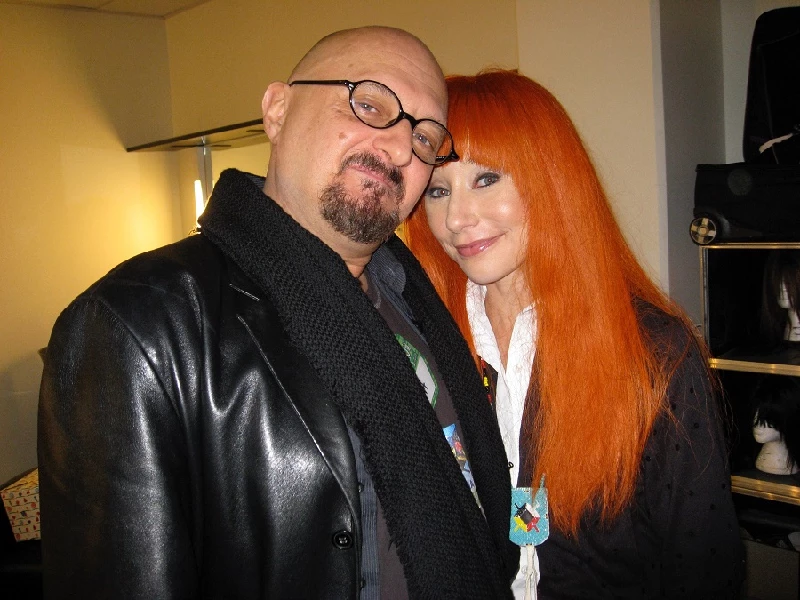
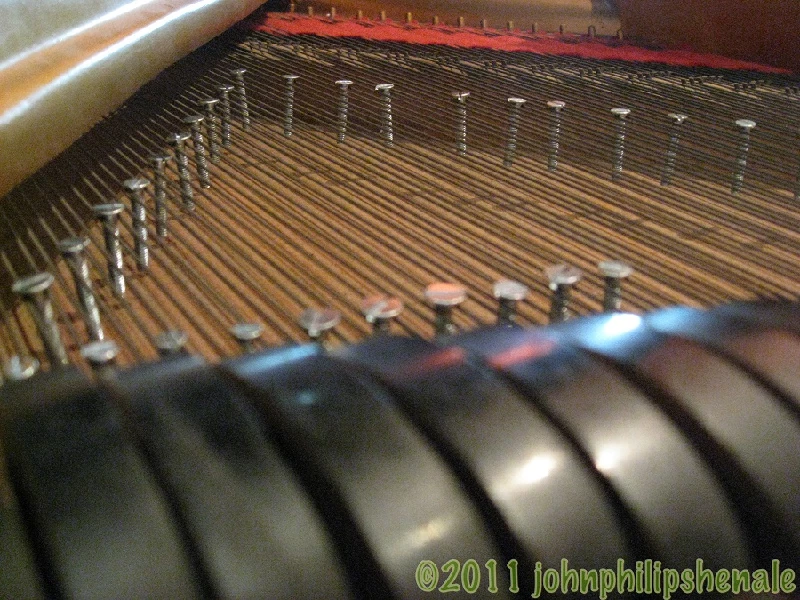
Night of Hunters prepared piano 2 by John Philip Shenale
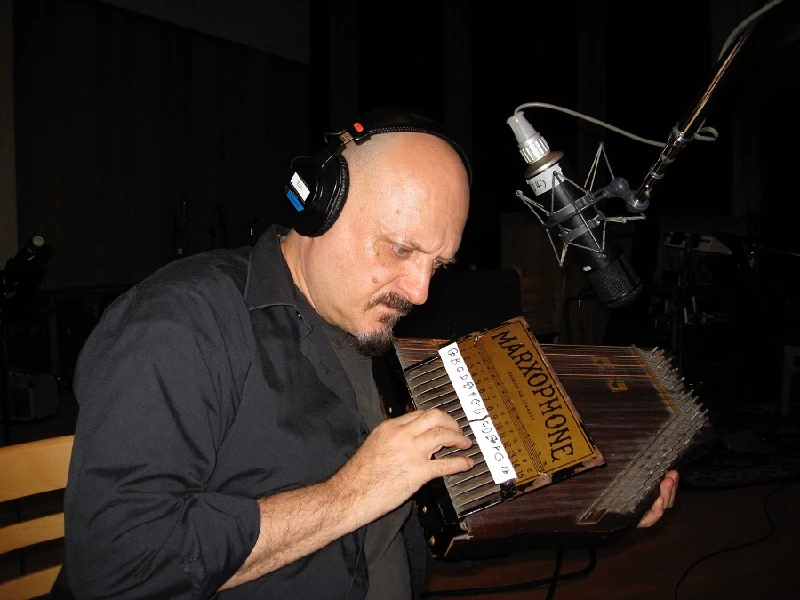
John Philip Shenale and the Marxophone
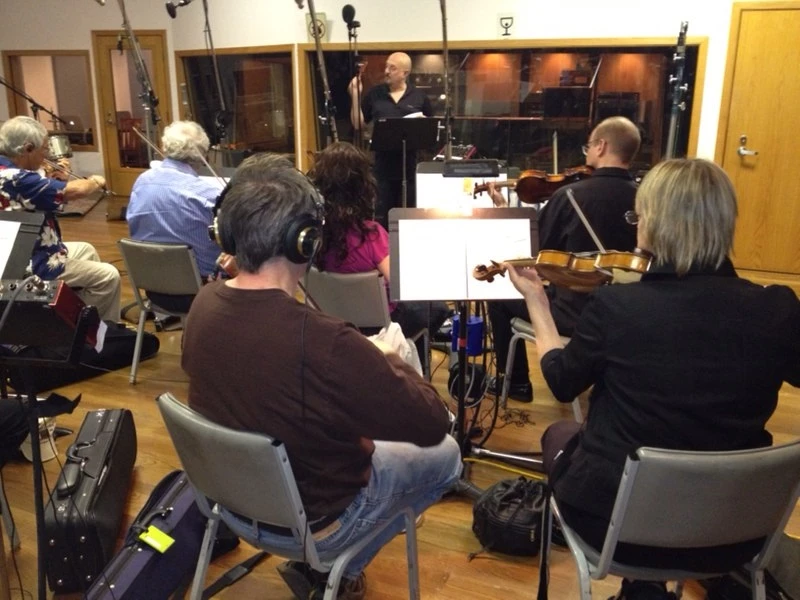
Sons of Anarchy sessions 2013
intro
To celebrate the 25th Anniversary of ‘Night of Hunters’ L.A. composer/arranger/producer John Philip Shenale discusses his role in the intricacies of Tori Amos’s classically-based album, and more.
interviews |
|
Interview (2025) |
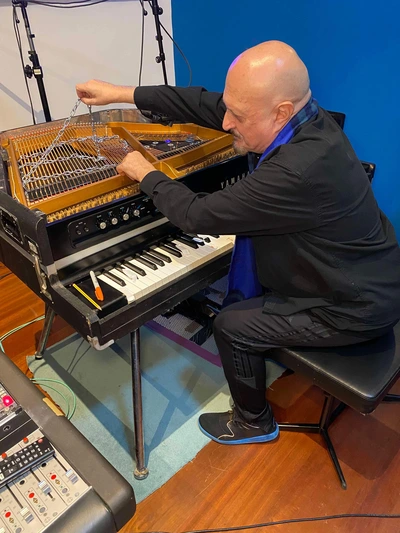
|
| Lisa Torem talks to John Philip Shenale about extending the sound palette of acoustic instruments and what’s beyond the cacophony of Cage? |
| Interview Part 1 (2023) |
most viewed articles
current edition
John McKay - InterviewRobert Forster - Interview
Cathode Ray - Interview
Spear Of Destiny - Interview
Fiona Hutchings - Interview
When Rivers Meet - Waterfront, Norwich, 29/5/2025
Carl Ewens - David Bowie 1964 to 1982 On Track: Every Album, Every Song
Chris Wade - Interview
Brian Wilson - Ten Songs That Made Me Love...
Shrag - Huw Stephens Session 08.12.10 and Marc Riley Session 21.03.12
previous editions
Heavenly - P.U.N.K. Girl EPBoomtown Rats - Ten Songs That Made Me Love....
Allan Clarke - Interview
Manic Street Preachers - (Gig of a Lifetime) Millennium Stadium, Cardiff, December 1999
Oasis - Oasis, Earl's Court, London, 1995
Barrie Barlow - Interview
Dwina Gibb - Interview
Beautiful South - Ten Songs That Made Me Love...
Pixies - Ten Songs That Made Me Love...
Sound - Interview with Bi Marshall Part 1
most viewed reviews
current edition
Peter Doolan - I Am a Tree Rooted to the Spot and a Snake Moves Around Me,in a CircleVinny Peculiar - Things Too Long Left Unsaid
Garbage - Let All That We Imagine Be The Light
Vultures - Liz Kershaw Session 16.06.88
John McKay - Sixes and #Sevens
Little Simz - Lotus
HAIM - I Quit
Morcheeba - Escape The Chaos
Eddie Chacon - Lay Low
Billy Nomates - Metalhorse
Pennyblackmusic Regular Contributors
Adrian Janes
Amanda J. Window
Andrew Twambley
Anthony Dhanendran
Benjamin Howarth
Cila Warncke
Daniel Cressey
Darren Aston
Dastardly
Dave Goodwin
Denzil Watson
Dominic B. Simpson
Eoghan Lyng
Fiona Hutchings
Harry Sherriff
Helen Tipping
Jamie Rowland
John Clarkson
Julie Cruickshank
Kimberly Bright
Lisa Torem
Maarten Schiethart